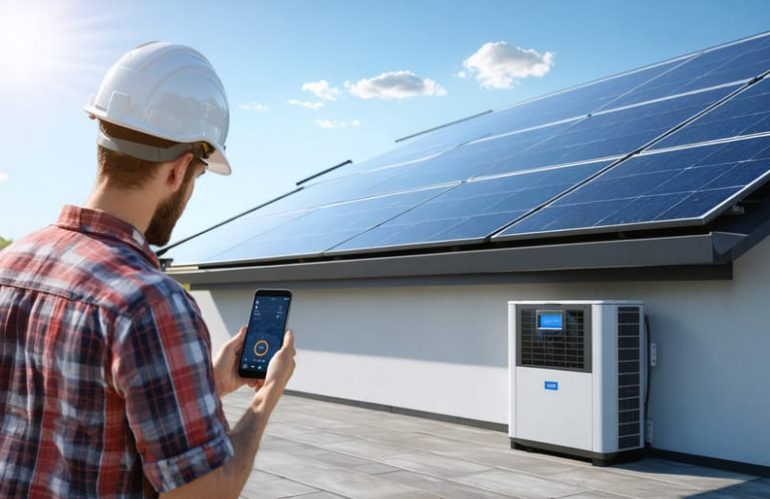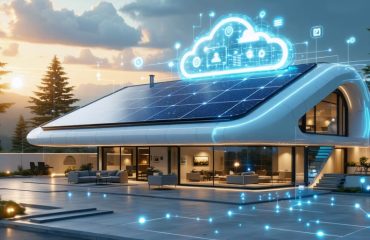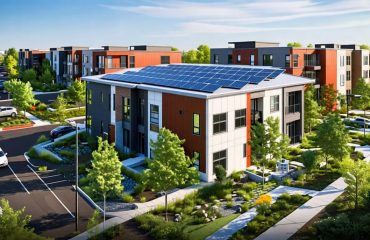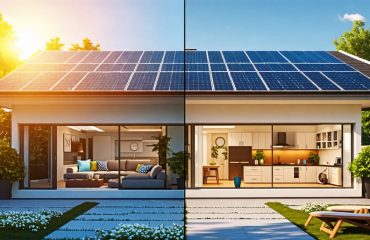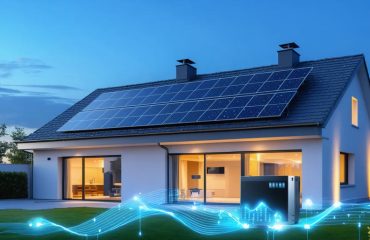Transform your solar investment into a powerhouse of efficiency with today’s advanced upgrade options. Modern smart solar upgrades can boost energy production by up to 30%, slash utility bills further, and add cutting-edge monitoring capabilities to aging systems. Whether your panels are several years old or you’re looking to maximize a recent installation, strategic upgrades deliver impressive returns through enhanced performance and new functionality.
Recent breakthroughs in microinverter technology, power optimizers, and battery storage solutions have made upgrading existing solar systems more attractive than ever. These improvements not only increase daily energy harvest but also provide critical backup power during outages and enable sophisticated energy management through smartphone apps. For homeowners who installed their systems more than five years ago, these upgrades can breathe new life into their solar investment while taking advantage of current federal tax incentives and improved technology.
This guide explores the most impactful solar panel upgrades available today, helping you navigate options that align with your energy goals and budget while maximizing your system’s long-term value.
Signs Your Solar System Needs an Upgrade
Age-Related Performance Issues
Like most electronic equipment, solar panels naturally experience a gradual decline in performance over time. Most quality panels lose about 0.5% to 1% efficiency each year, meaning a 20-year-old system might operate at 80-90% of its original capacity. Common signs of aging include slower charging times, reduced energy output during peak hours, and decreased overall production shown in your monitoring system.
Regular maintenance can help slow this decline, but eventually, your aging system may not meet your energy needs as effectively as it once did. This is especially true if your household energy consumption has increased over the years through added appliances or family members. The good news is that modern panels are significantly more efficient than those installed a decade ago, making an upgrade a smart choice for maintaining optimal energy production.
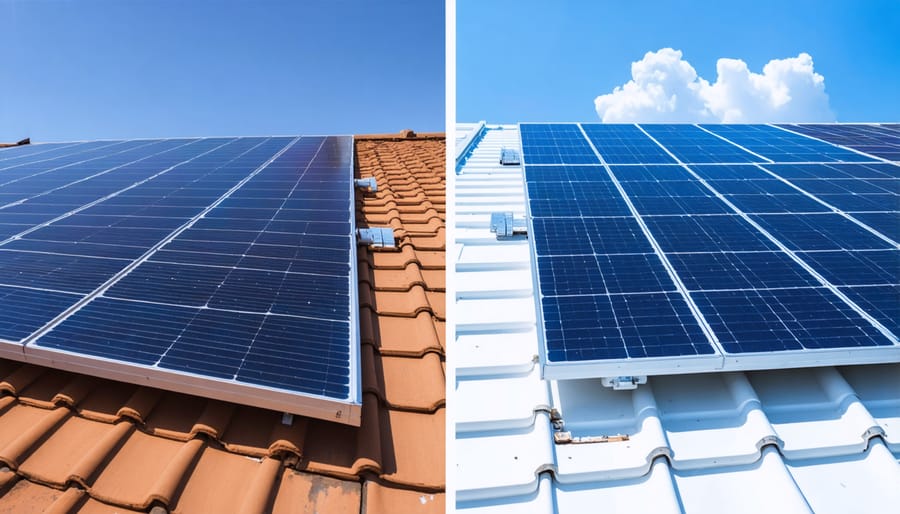
Increased Energy Demands
As households evolve, energy needs often increase. Adding new appliances, transitioning to electric vehicles, or expanding your living space can significantly impact your electricity consumption. Installing a home office, upgrading to central air conditioning, or welcoming new family members typically leads to higher energy demands that your existing solar system may struggle to meet. Even seemingly small changes, like adding a pool pump or converting to an electric water heater, can strain your current setup. Monitoring your energy bills and usage patterns can help identify when your system is no longer meeting your needs. If you’re consistently pulling more power from the grid than your panels produce, it might be time to consider expanding your solar capacity to maintain energy independence and cost savings.
New Technology Benefits
Modern solar panels offer impressive advantages over older models, with efficiency rates now reaching up to 23% compared to the previous 15%. These newer panels capture more sunlight even in low-light conditions, making them effective year-round. They’re also more durable, with many manufacturers offering 25-30 year warranties, ensuring long-term reliability and performance.
Smart monitoring systems now come standard with most new panels, allowing you to track energy production in real-time through your smartphone. This technology helps you optimize energy usage and quickly identify any performance issues. Additionally, newer panels are sleeker and more aesthetically pleasing, maintaining your home’s curb appeal while taking up less roof space.
The latest models also feature better temperature tolerance, maintaining higher efficiency even during hot summer days when traditional panels typically experience performance drops. This means more consistent energy production throughout the year and greater savings on your electricity bills.
Popular Solar Panel Upgrade Options
Panel Efficiency Improvements
Modern solar panels have made remarkable strides in efficiency, offering homeowners more power from less roof space. Today’s premium panels can achieve efficiency ratings of 20-23%, compared to the 15-17% common in older models. This improvement means you can generate significantly more electricity with the same number of panels, making designing the perfect solar system more achievable than ever.
Recent innovations include bifacial panels that capture sunlight from both sides, boosting energy production by up to 30% in optimal conditions. Anti-reflective coatings and improved cell architecture help panels perform better in low-light conditions and maintain higher output during hot weather. Smart panels with built-in optimization technology can now automatically adjust their performance to maximize energy production throughout the day.
These improvements not only increase your system’s overall output but also provide better value for your investment. With enhanced durability and longer warranties, modern panels offer peace of mind along with superior performance, making them an excellent choice for both new installations and upgrades to existing systems.
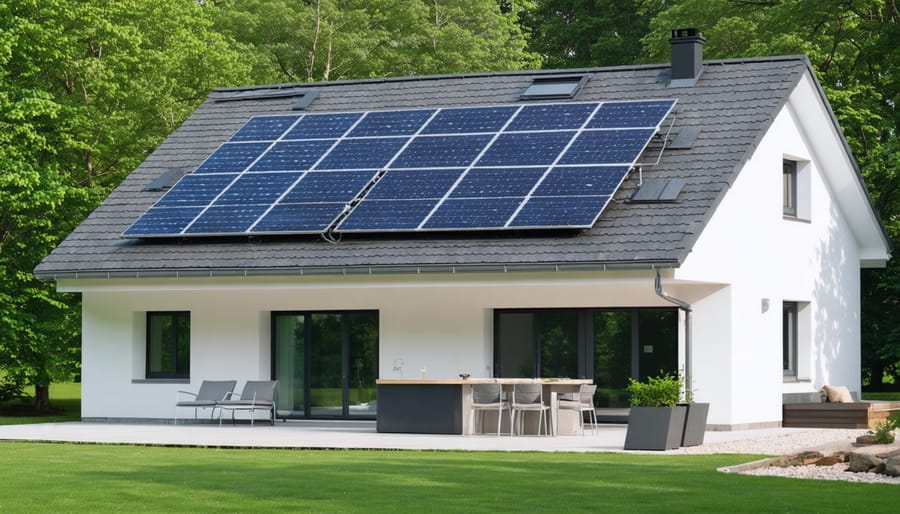
Battery Storage Solutions
Adding battery storage to your solar panel system is one of the most impactful upgrades you can make. Modern battery solutions allow you to store excess energy generated during sunny days for use during nighttime or cloudy weather, significantly reducing your reliance on the power grid. Today’s home batteries are more compact, efficient, and affordable than ever before.
Popular options like the Tesla Powerwall and LG Chem RESU offer seamless integration with existing solar systems. These smart batteries automatically manage energy flow, storing power when production exceeds usage and releasing it when needed. This capability is especially valuable during power outages, as your home can continue running on stored solar energy.
When considering battery storage, focus on three key factors: capacity (how much energy it can store), power rating (how much electricity it can deliver at once), and cycle life (how many charges it can handle). Most homeowners find that a 10-13 kWh battery system provides adequate backup power for essential appliances and evening usage.
The addition of battery storage not only increases your energy independence but can also help maximize your solar investment through better energy management and potential utility bill savings.
Smart Monitoring Systems
Modern smart monitoring systems have revolutionized how homeowners interact with their solar installations. These intelligent systems provide real-time data about your solar panels’ performance, energy production, and consumption patterns through user-friendly smartphone apps or web interfaces.
With advanced monitoring, you can track each panel’s output individually, quickly identify any underperforming units, and receive instant alerts about potential issues before they impact your system’s efficiency. Many of these systems also integrate weather forecasting to help predict daily energy production and automatically adjust your home’s energy usage patterns.
The real magic happens when these monitoring systems work with your home automation setup. They can automatically run energy-intensive appliances during peak solar production hours, store excess energy in batteries when prices are low, and sell power back to the grid when rates are highest. This smart approach to energy management typically results in 15-30% better overall system efficiency and significant savings on your electricity bills.
Best of all, most modern monitoring solutions can be easily retrofitted to existing solar installations, making them an excellent upgrade option for any solar-powered home.
Inverter Upgrades
Modern inverter technology has revolutionized how solar systems convert and manage power. Today’s inverters offer improved efficiency rates of up to 98%, meaning more of your solar energy gets converted into usable electricity. Smart features like remote monitoring allow you to track system performance through your smartphone, giving you real-time insights into energy production and consumption.
Many newer inverters come with built-in power optimizers that can increase energy harvest by up to 25% compared to older models. They work by adjusting voltage levels for each panel individually, ensuring maximum performance even when some panels are shaded or dirty. This technology also enables better fault detection, helping you identify and address issues before they impact system performance.
Another significant advantage is enhanced grid integration. Modern inverters can automatically adjust their output to match grid requirements and provide stable power during fluctuations. Some models even include battery-ready capabilities, making it easier to add energy storage to your system in the future. Plus, with improved heat management and robust safety features, newer inverters typically last longer and operate more reliably than their predecessors.
Financial Benefits and Incentives
Return on Investment
Investing in solar panel upgrades can deliver impressive returns through reduced energy bills and increased system efficiency. Most homeowners see their initial investment returned within 3-5 years, depending on the specific upgrades chosen and local energy costs. To maximize your solar savings, consider the financial impact of each upgrade option.
Microinverter upgrades typically offer a 5-10% increase in system efficiency, translating to approximately $100-200 annual savings for the average household. Battery storage systems, while requiring a larger upfront investment ($5,000-15,000), can reduce or eliminate expensive peak-hour energy consumption and provide backup power security.
Panel optimization technology shows a particularly strong ROI, with most systems paying for themselves within 2-3 years through improved energy harvesting. Smart monitoring systems, costing between $300-800, help identify performance issues early and can prevent energy loss worth hundreds of dollars annually.
Solar panel cleaning and maintenance upgrades, such as automated cleaning systems or protective coatings, typically return their investment within the first year through improved efficiency and reduced maintenance costs. When combined with current solar incentives and tax credits, these upgrades become even more financially attractive, often reducing payback periods by 20-30%.
Remember that actual returns vary based on your location, energy usage patterns, and local utility rates, but most homeowners report satisfaction with their upgrade investments within the first few years of implementation.
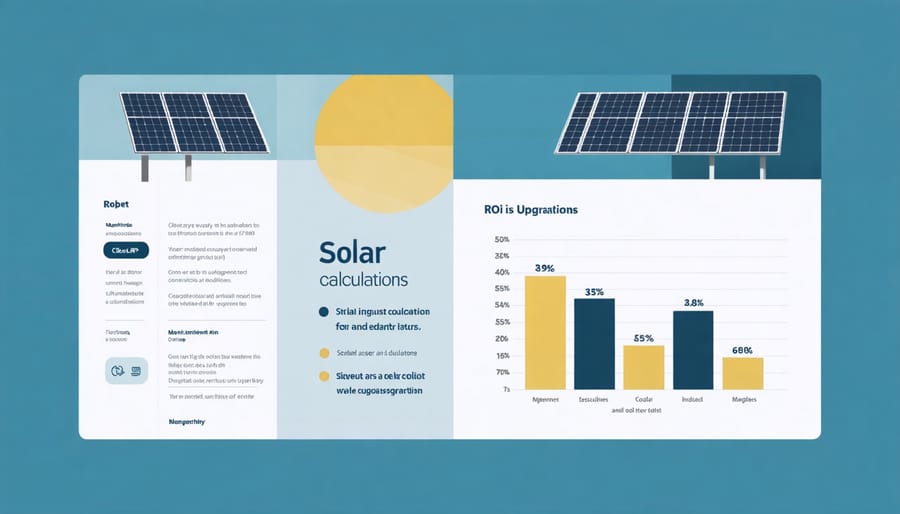
Available Tax Credits and Rebates
The federal government currently offers a generous 30% tax credit through the Inflation Reduction Act for solar system upgrades and improvements, making now an excellent time to enhance your existing installation. This credit applies to both equipment and installation costs, potentially saving you thousands on your upgrade investment.
Many states offer additional incentives on top of the federal credit. For example, California provides rebates through the Self-Generation Incentive Program (SGIP), while New York offers the NY-Sun Megawatt Block Program. Local utilities often have their own rebate programs for solar upgrades, particularly for adding battery storage or smart inverters to existing systems.
Property tax exemptions are available in numerous states for the added home value from solar improvements. Some states also offer performance-based incentives, paying you for the extra solar energy your upgraded system produces.
Net metering policies in most states allow you to earn credits for excess power generated by your enhanced system. When combined with available rebates, these programs can significantly reduce your upgrade costs and accelerate your return on investment.
Remember to consult with a qualified solar professional to understand which incentives apply to your specific situation, as programs and eligibility requirements can vary by location and system type.
Upgrading your solar panel system represents a smart investment in both your home’s future and the environment. As we’ve explored throughout this article, modern solar technologies offer significant improvements in efficiency, storage capabilities, and smart monitoring features that can dramatically enhance your system’s performance and value.
By upgrading your existing solar installation, you can expect to see immediate benefits in the form of increased energy production, better storage solutions, and more sophisticated energy management. These improvements translate directly into greater energy independence and reduced utility bills, while also increasing your home’s market value.
The financial advantages of solar upgrades extend beyond immediate savings. With various tax incentives, rebates, and financing options available, upgrading your system has never been more affordable. When you consider the long-term returns on investment, including protection against rising energy costs and potential income from excess energy production, the decision to upgrade becomes even more compelling.
Environmental benefits remain a crucial factor, as newer solar technologies help reduce your carbon footprint more effectively than older systems. By generating clean energy more efficiently, you’re making a meaningful contribution to environmental sustainability while setting an example for your community.
Don’t let your existing solar system limit your potential for energy independence. Whether you’re interested in adding battery storage, upgrading to more efficient panels, or implementing smart monitoring systems, there’s never been a better time to enhance your solar investment. We encourage you to consult with solar professionals who can assess your current system and recommend the most beneficial upgrades for your specific situation.
Take the next step in your solar journey today. With the right upgrades, you can maximize your energy production, increase your savings, and contribute to a more sustainable future. The technology is ready – are you?

